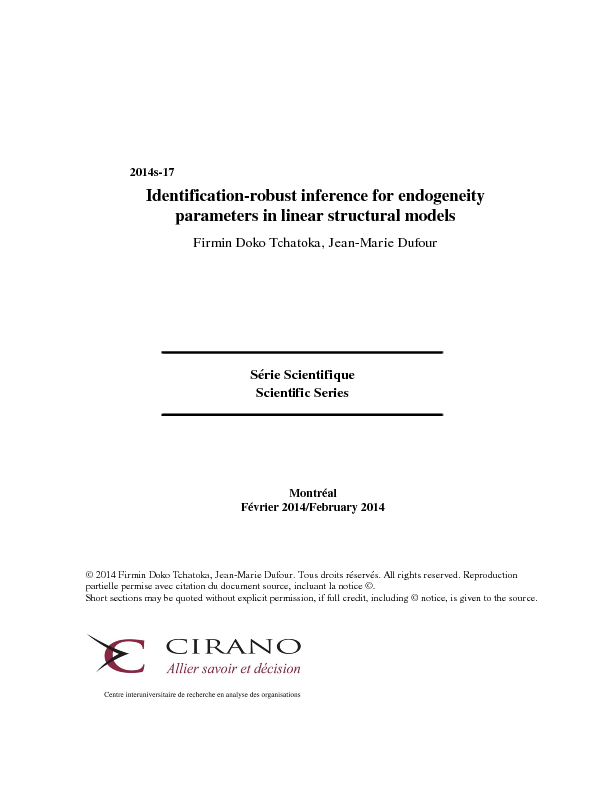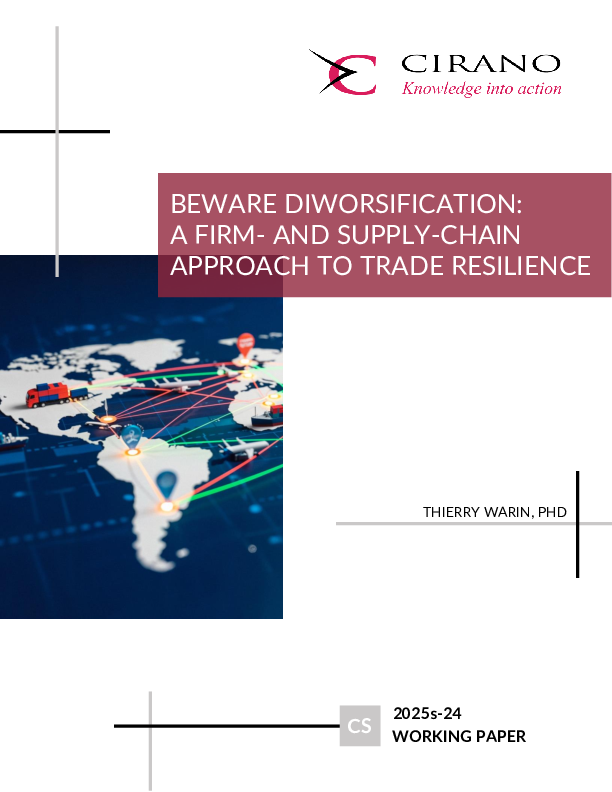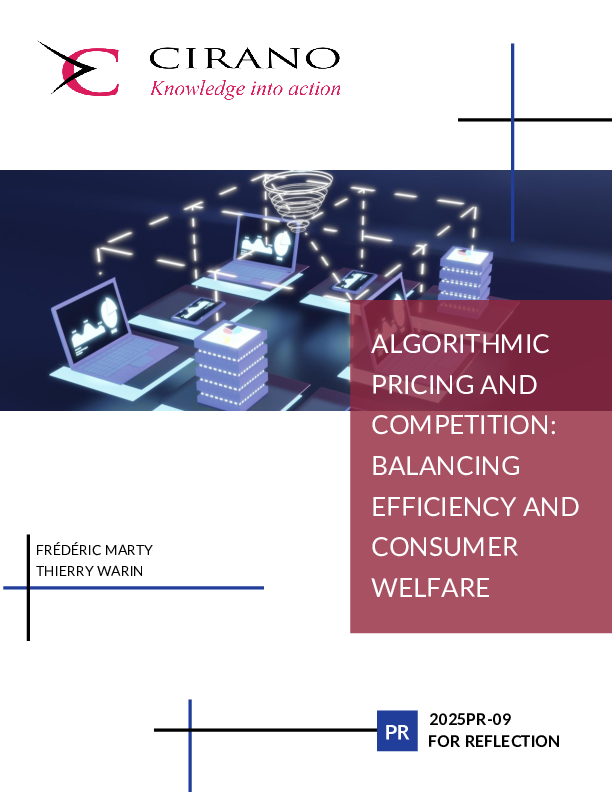Identification-robust inference for endogeneity parameters in linear structural models
We provide a generalization of the Anderson-Rubin (AR) procedure for inference on parameters which represent the dependence between possibly endogenous explanatory variables and disturbances in a linear structural equation (endogeneity parameters). We focus on second-order dependence and stress the distinction between regression and covariance endogeneity parameters. Such parameters have intrinsic interest (because they measure the effect of common factors which induce simultaneity) and play a central role in selecting an estimation method (because they determine simultaneity biases associated with least-square methods). We observe that endogeneity parameters may not be identifiable and we give the relevant identification conditions. These conditions entail a simple identification correspondence between regression endogeneity parameters and usual structural parameters, while the identification of covariance endogeneity parameters typically fails as soon as global identification fails. We develop identification-robust finite-sample tests for joint hypotheses involving structural and regression endogeneity parameters, as well as marginal hypotheses on regression endogeneity parameters. For Gaussian errors, we provide tests and confidence sets based on standard Fisher critical values. For a wide class of parametric non-Gaussian errors (possibly heavy-tailed), we also show that exact Monte Carlo procedures can be applied using the statistics considered. As a special case, this result also holds for usual AR-type tests on structural coefficients. For covariance endogeneity parameters, we supply an asymptotic (identification-robust) distributional theory. Tests for partial exogeneity hypotheses (for individual potentially endogenous explanatory variables) are covered as special cases. The proposed tests are applied in three empirical examples: a model of the relation trade and economic growth; and two models of the returns to educations: the well-known study of Bound, Angrist and Balker (1995), and an alternative model considered by Card (1995).
[ - ]




